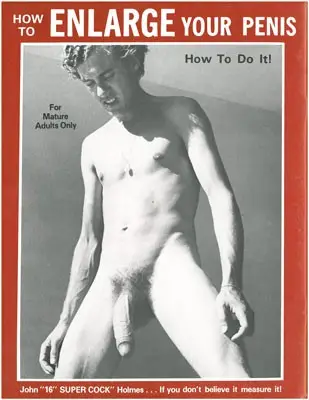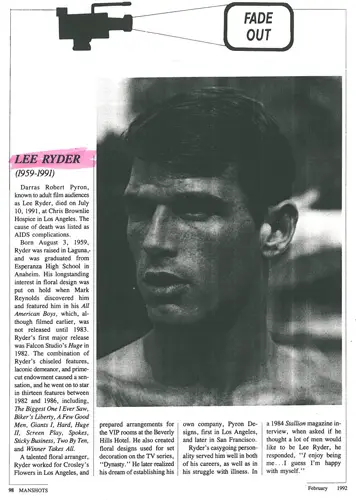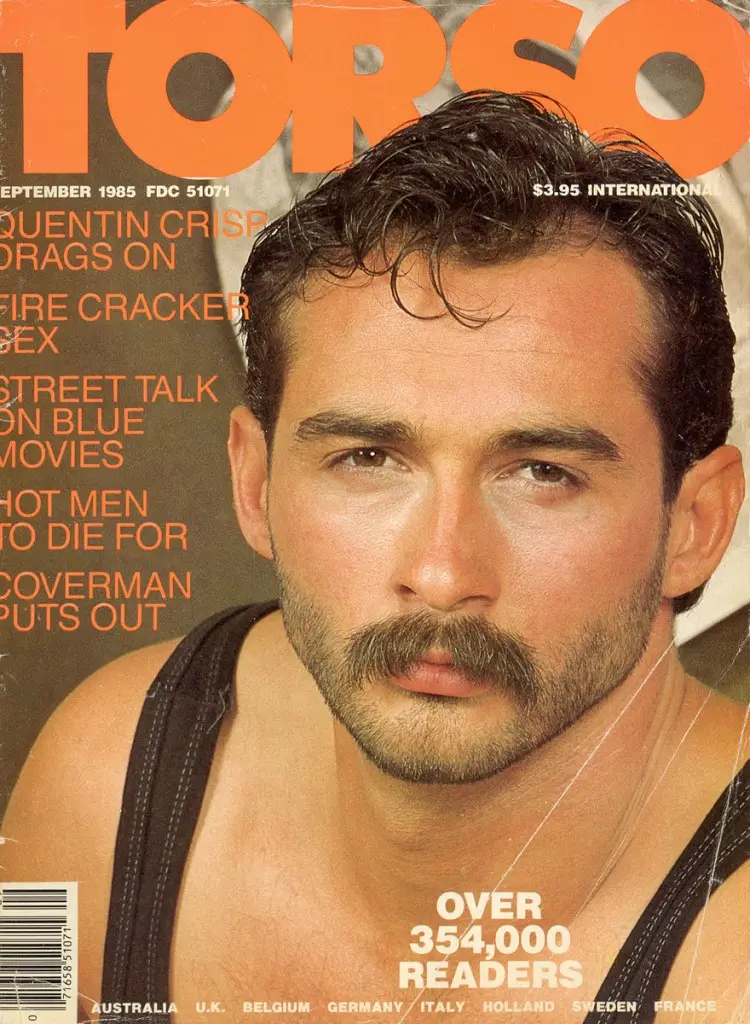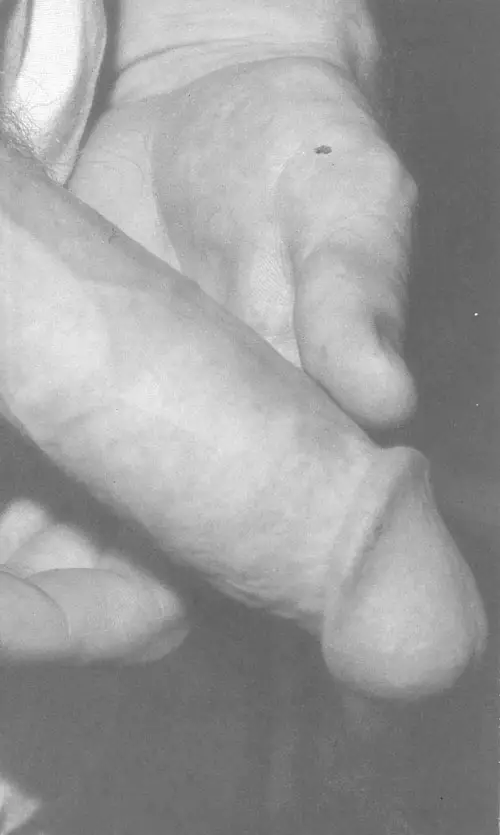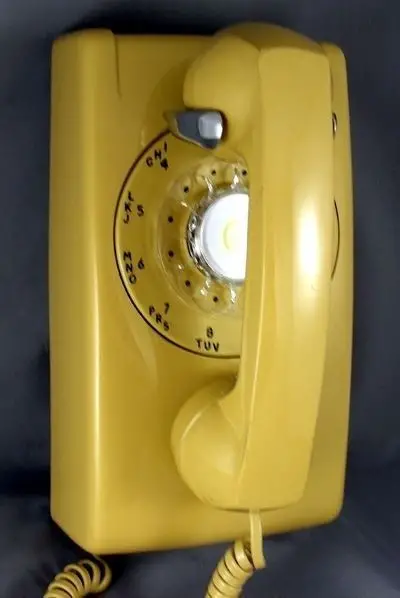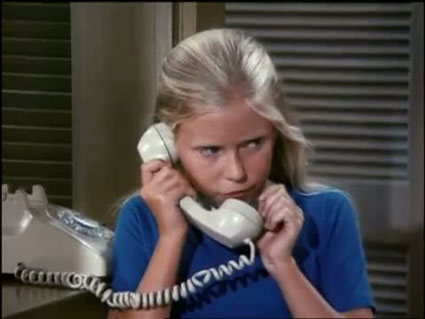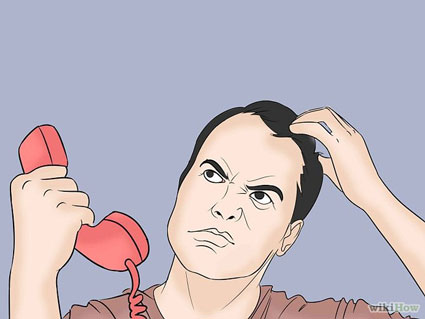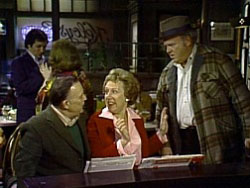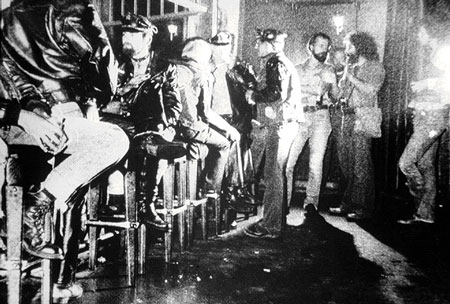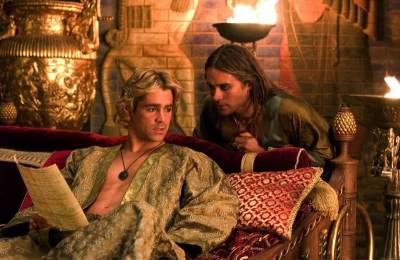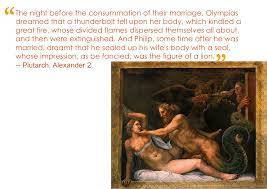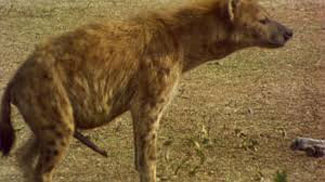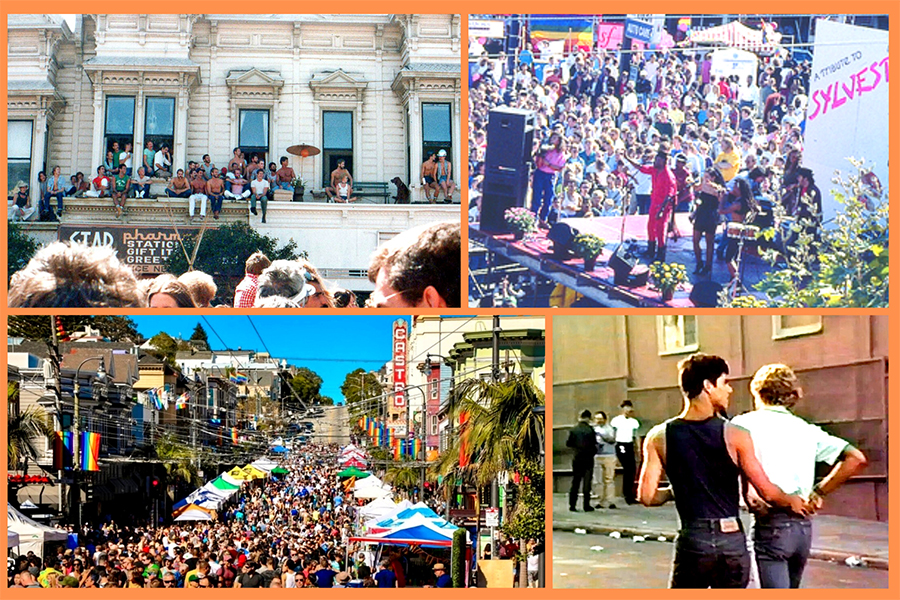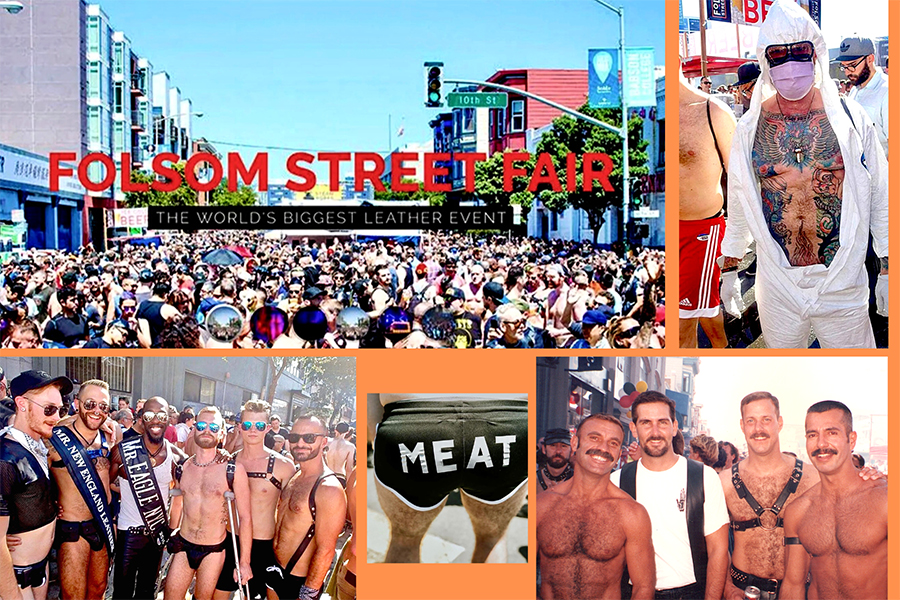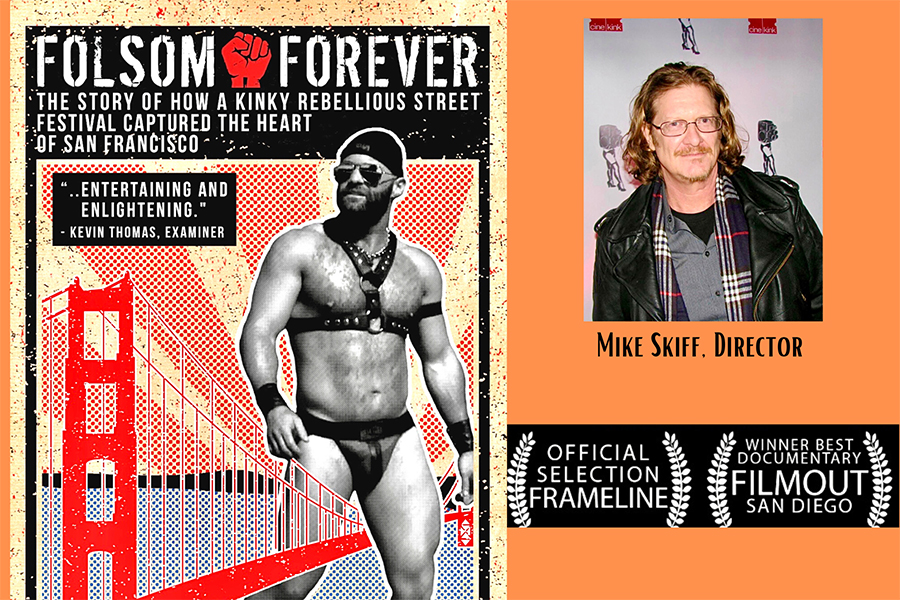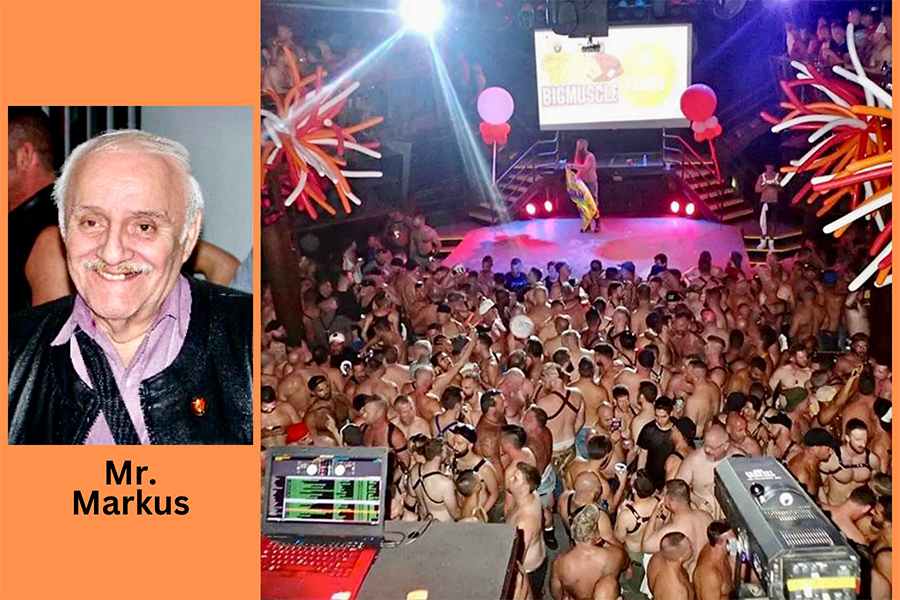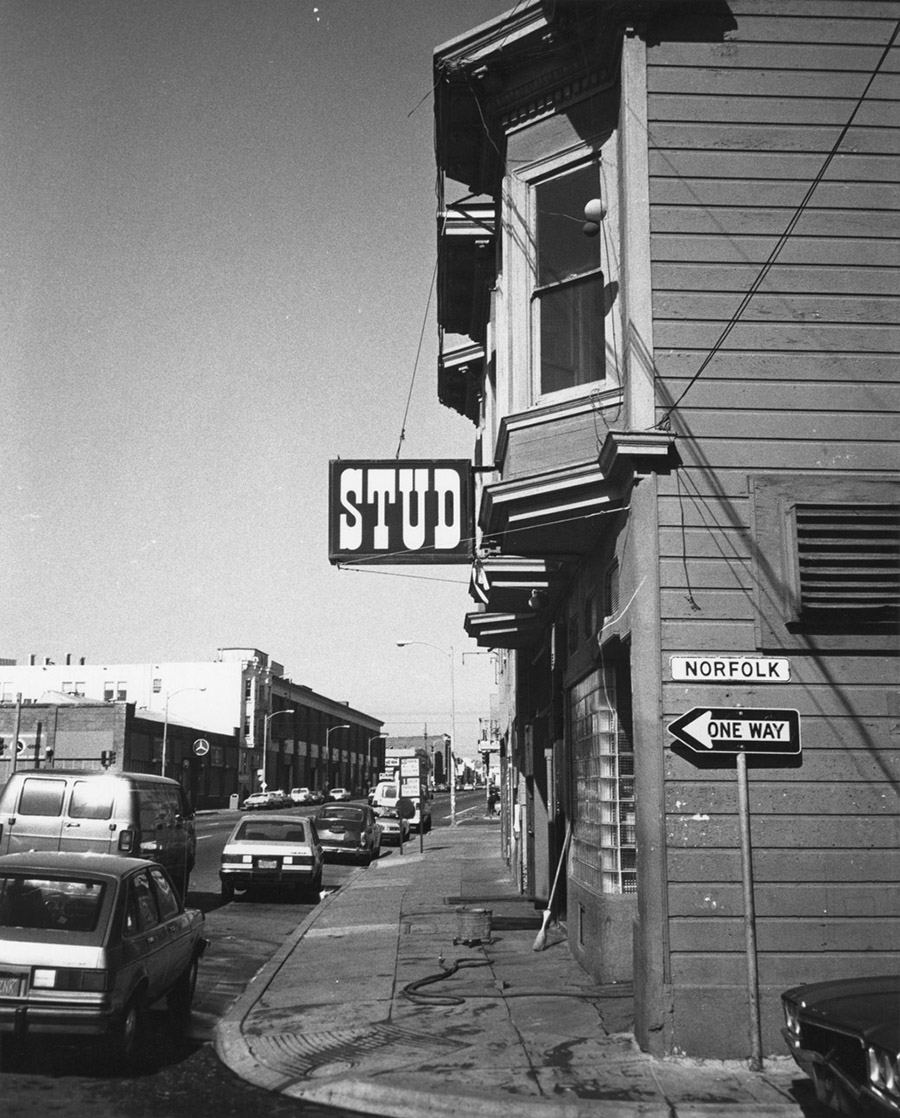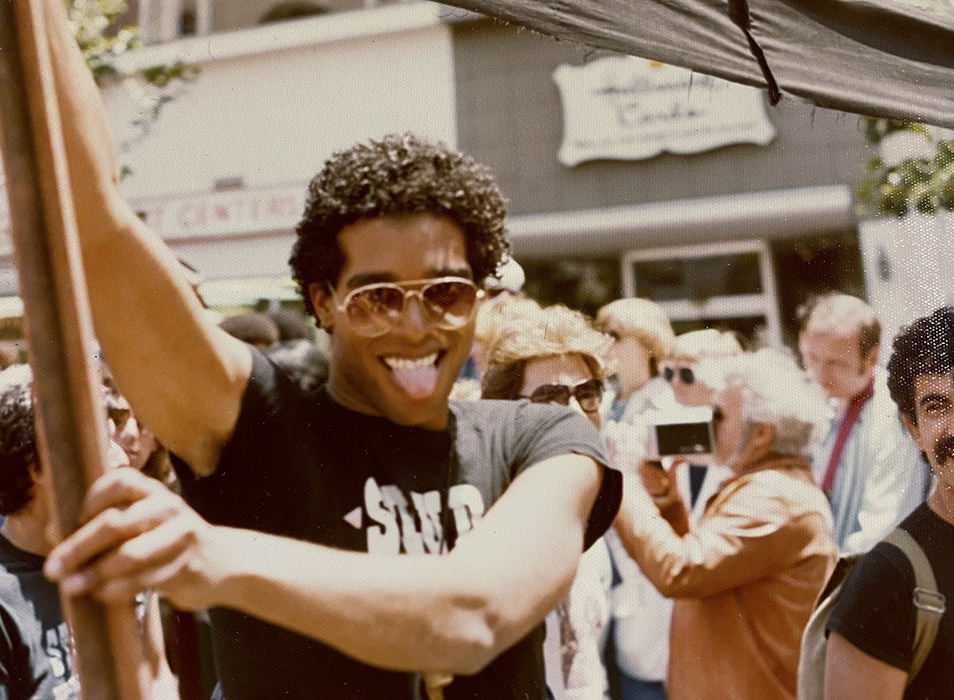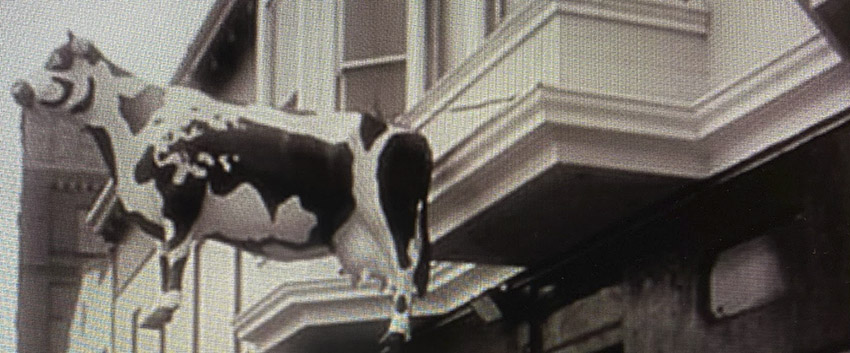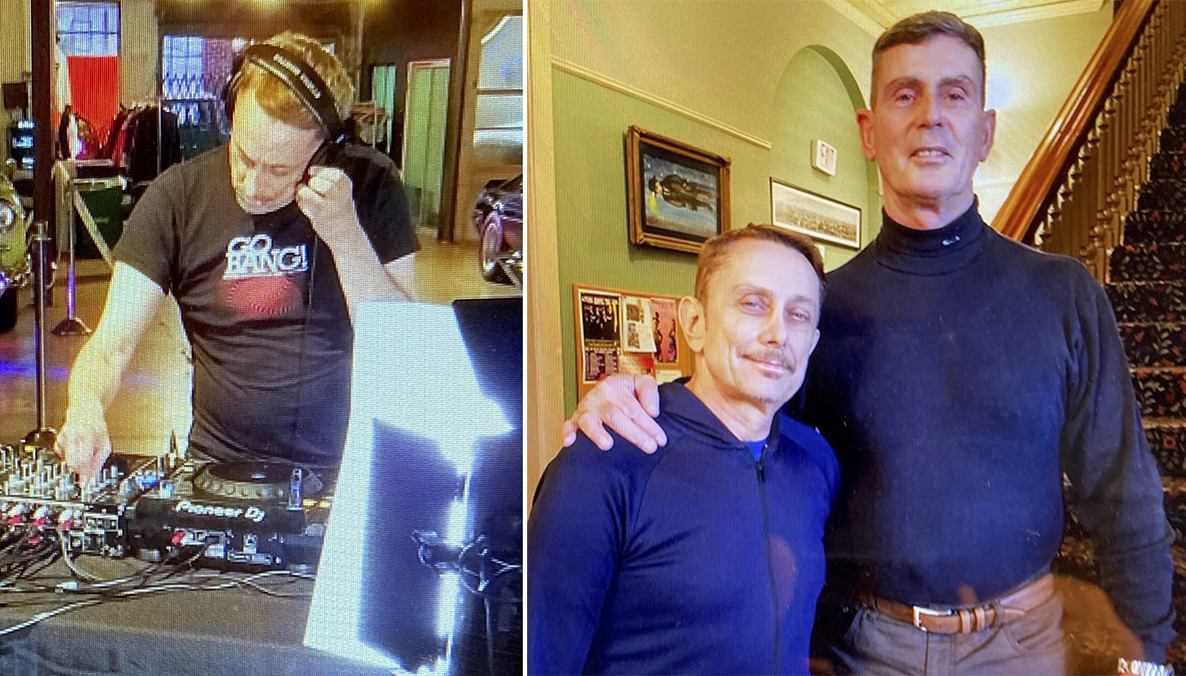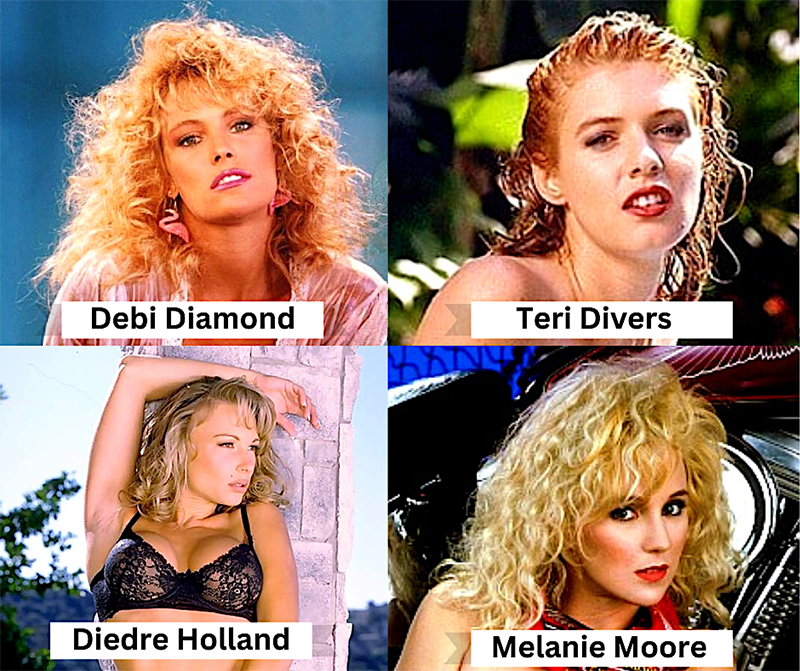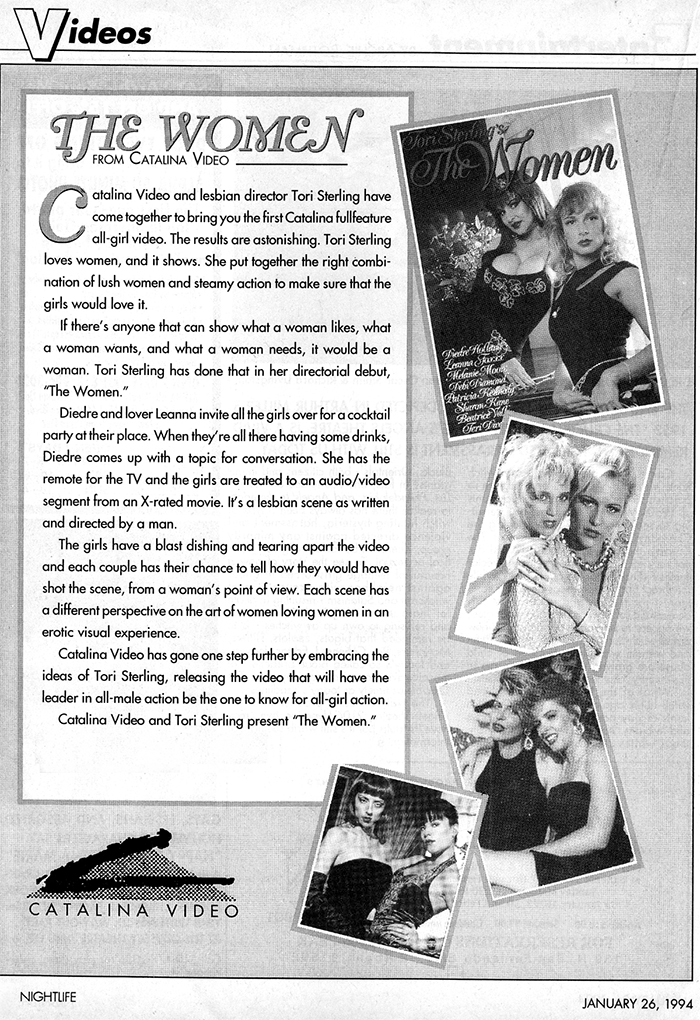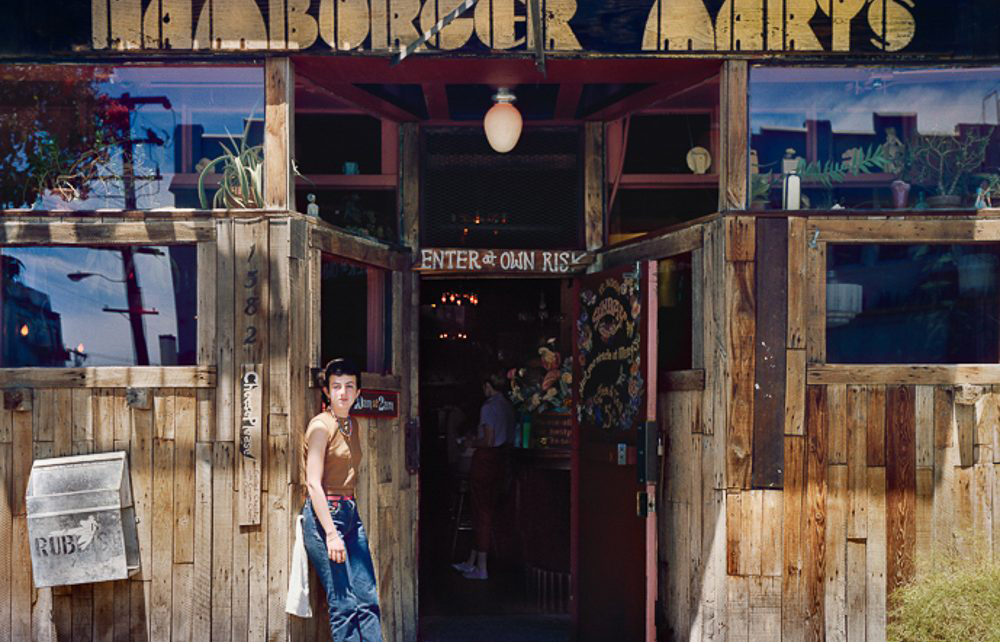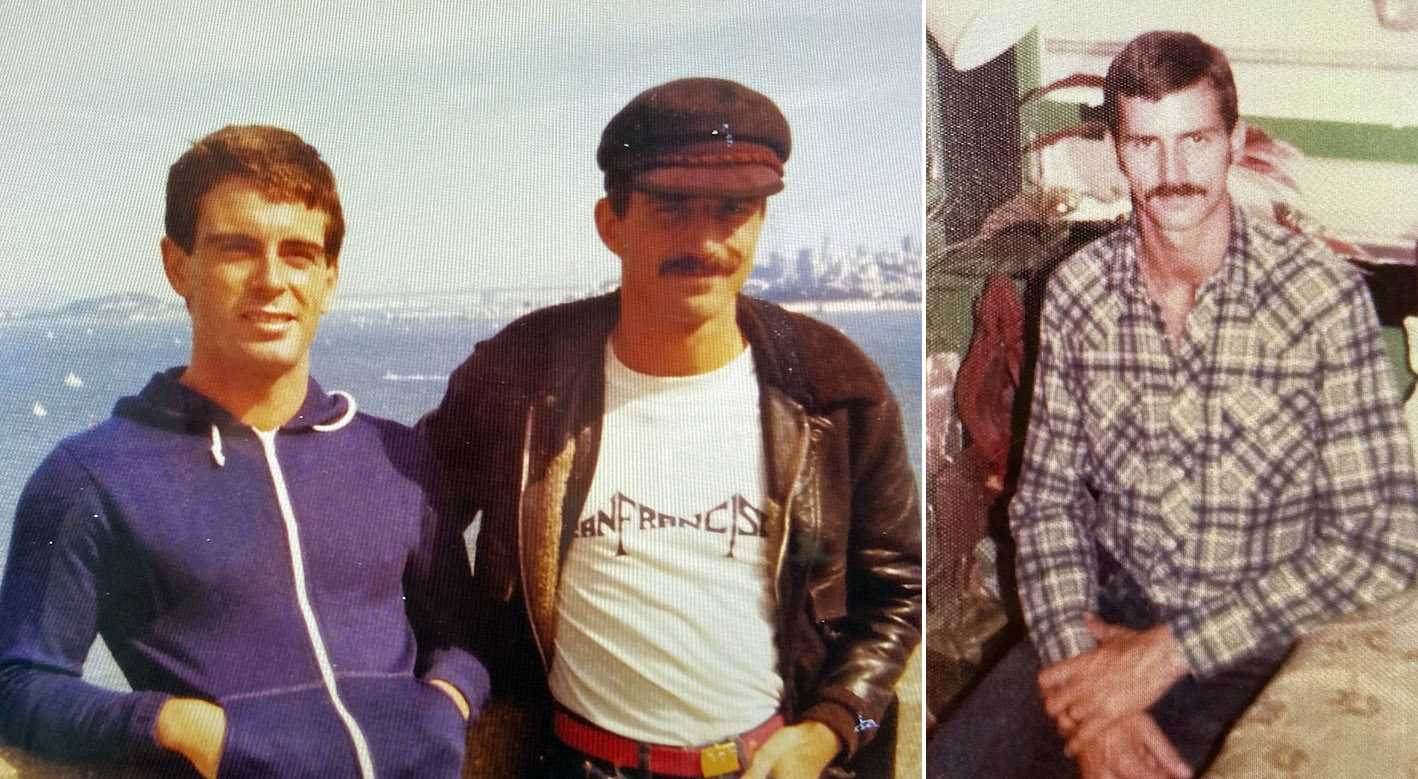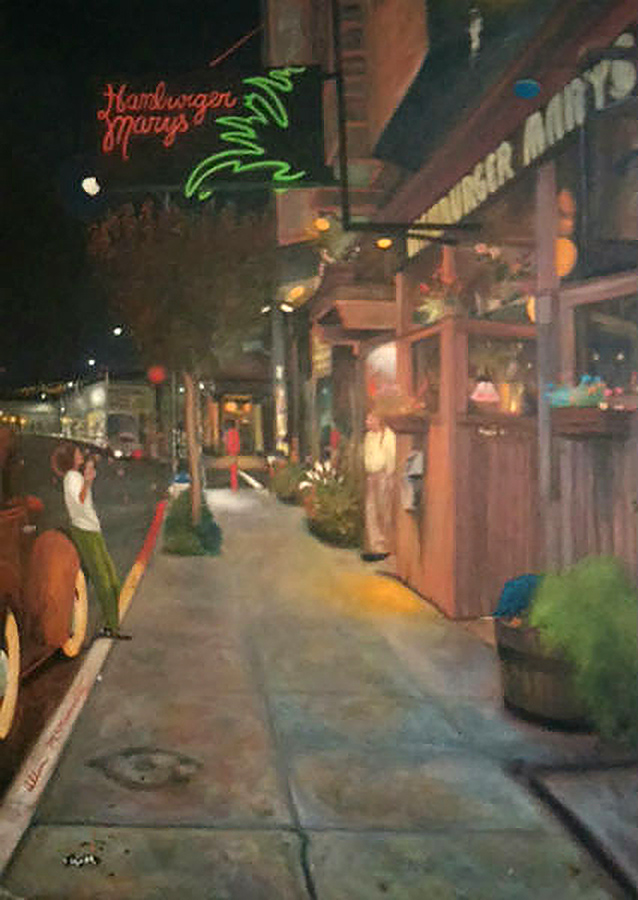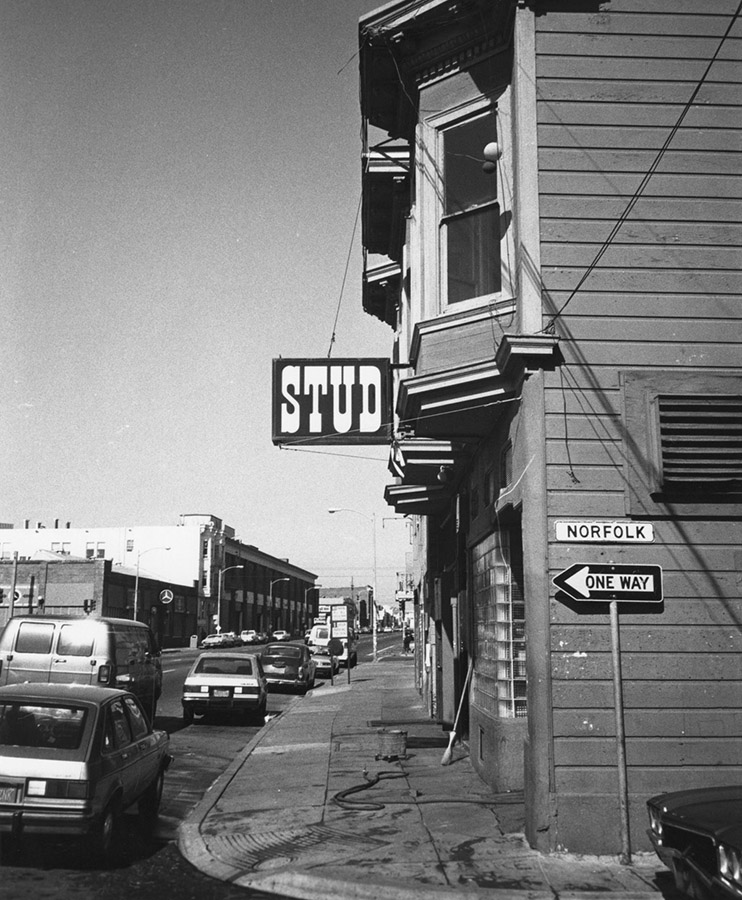By Will Seagers
Hi folks! Will here. Today's stroll back through memory lane will put a little bounce in your step - it's time to look back at some of the famous and infamous dance clubs in our "Dive" into Soma/Folsom history!
Although the South of Market area hosted some of the biggest and most popular discos and dance clubs like Trocadero Transfer, Dreamland and The End Up, it would not be fair to the history of San Francisco not to mention some of the clubs that started the whole phenomenon. The City, Dance Your Ass Off, Bones, and The I Beam come to mind... just to name a few. These were some fantastic dance venues in other parts of town back in the day.
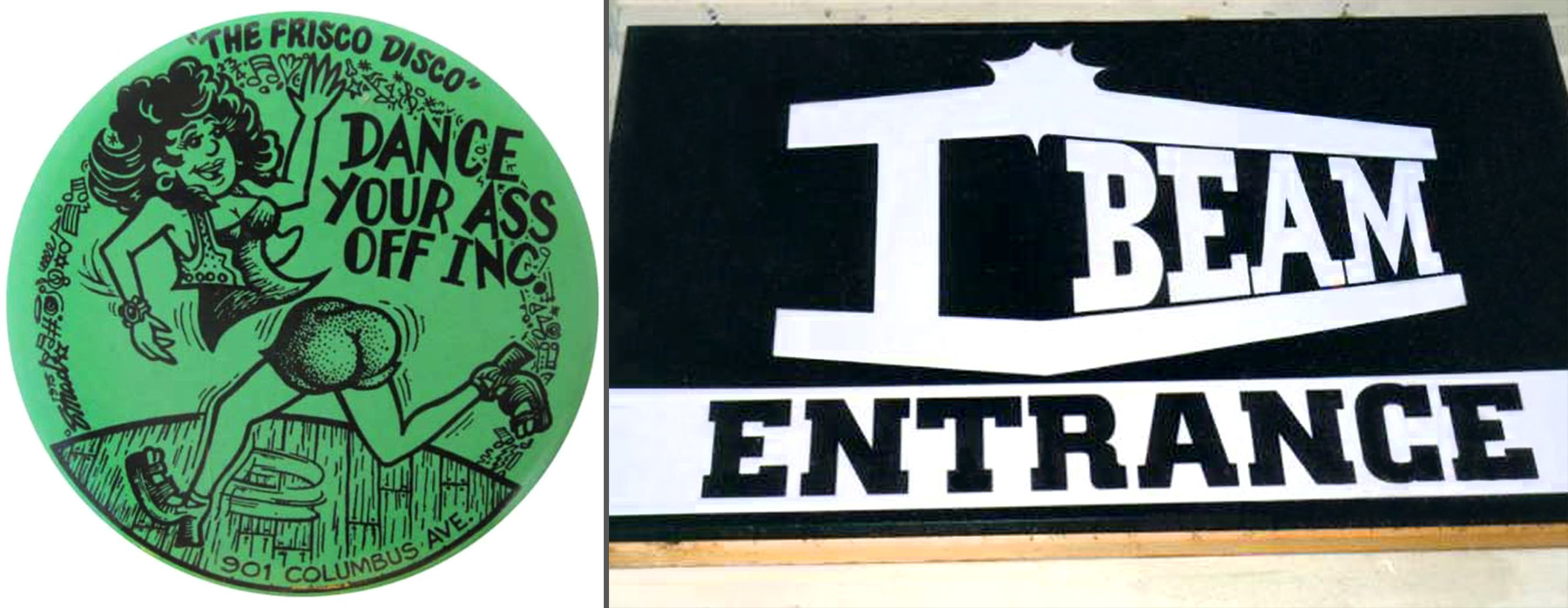
Dance Your Ass Off button (L); I Beam sign (R)
Just off Folsom and down the street from Hamburger Mary's and The Stud was The Oasis. This bar with its unique swimming pool made for an exotic backdrop for the equally exotic and talented Timmy Rivers, its first DJ. Timmy was famous for his very sophisticated taste in music as well as legendary mixing skill. Still open and featuring great drag and cabaret, it has weathered several decades in SoMa!

Oasis SF, present era
Although huge in popularity, The End Up was a modestly sized venue located at 6th and Harrison that was opened in 1973. You could always count on great music from DJ talents like George Ferren (listen to his current music here), Steve Fabus and Peter Struvy - just to name a few. Although it had its own attraction for the late night/early morning crowd, it became an infamous after hours club catching the "still wired" revelers from Trocadero and Dreamland - which closed at 2 AM. The DJs took full advantage of this crowd and played amazing classics as well as breaking a lot of hot new tunes. Yours truly had the privilege (albeit sort of brief) of being one of their sound techs. Together with Tom Junnell in the late 80s, we revitalized the sound system with state of the art JBL Cabaret series speakers and some vital new electronics. It seemed that the DJs and the dancers noticed and responded with joy! This was truly one of San Francisco's one of a kind experiences.
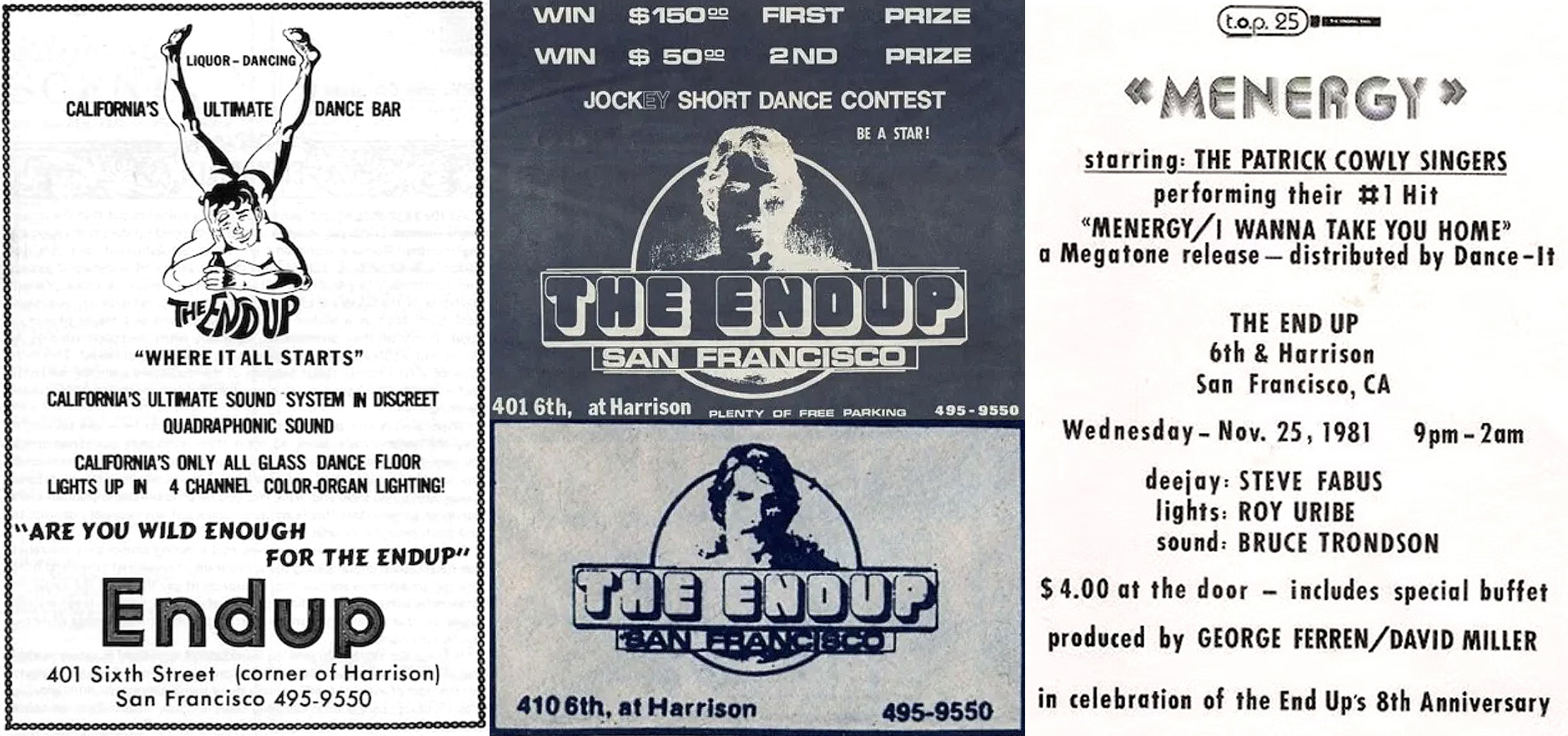
End Up ads
Now on to the big time... Trocadero Transfer! Built in 1977, it was owned and created by Dick Collier of Baltimore. This club broke new ground in terms of size and sound. Graebar Sound was brought in from NYC. Peter Spar and Barry Lederer of Graebar brought to the table the kind of sound found in 12 West and Fire Island Pines' Sandpiper and John Whyte's Boatel (the home of the original Tea Dance), just to name a few. The hardwood dancefloor was vast and specially built as not to fatigue the dancers through the long nights. After a parade of talent made its way up those steps of the mirrored pyramid (the DJ booth), a young man originally from Masapequa, Long Island made his way up those steps to be one of the most famed DJs in the country: Bobby Viteritti. He was a massive success for the club and had an immense following. And, it gave rise for yet another Goliath – Dreamland.
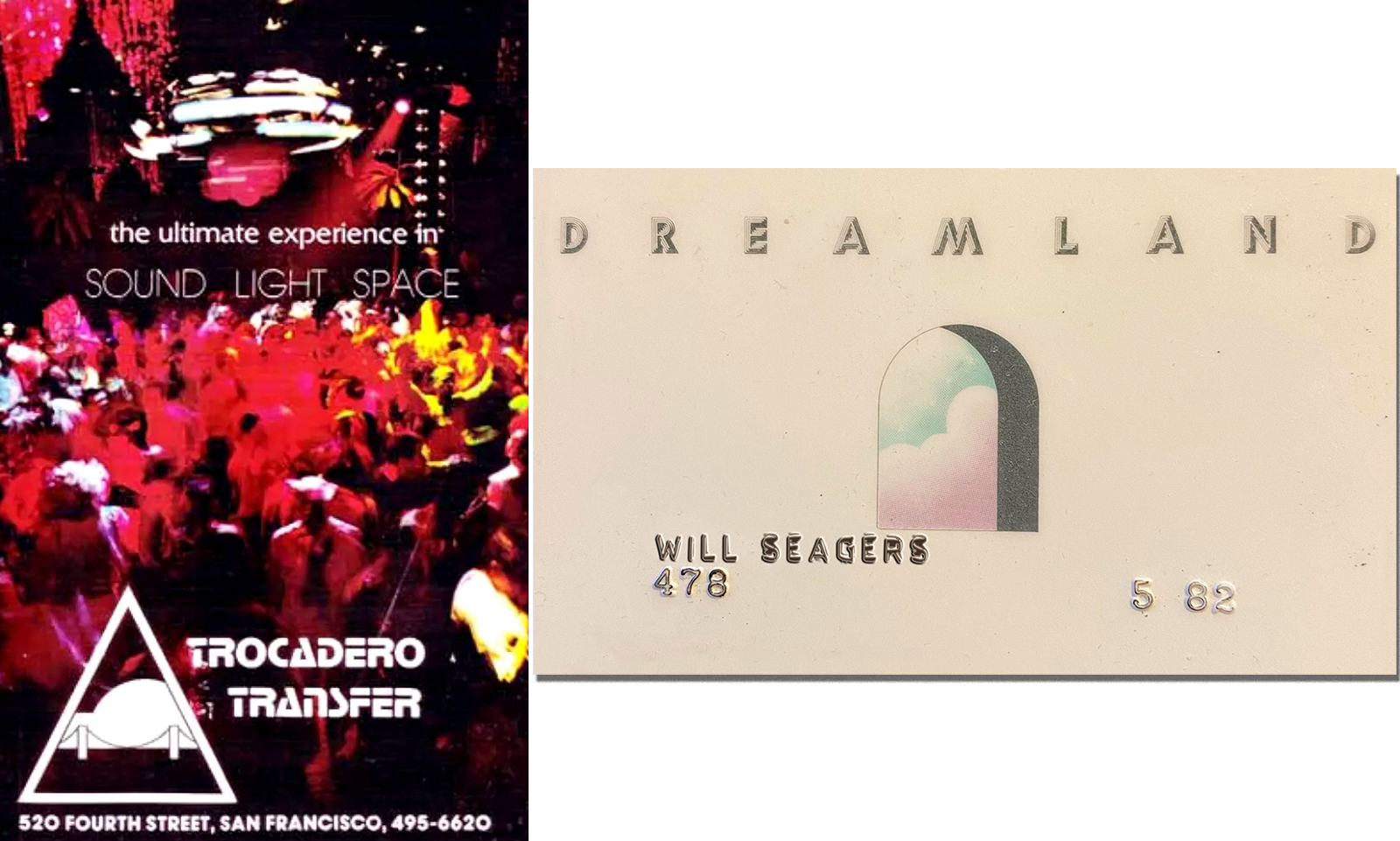
Trocadero Transfer ad (L); Will Seagers' Dreamland membership card (R)
Dreamland! Born in the late 70s (circa 1979), was the "dream" and creation of Michael Maier, formerly of Cincinnati. I had the pleasure of meeting and having a rather torrid affair with Michael during the summer of 1978. We both worked on Fire Island. He worked for The Sandpiper and I worked for the Boatel. After work we would go out dancing in our "neighborhood bar," The Sandpiper. The music was always great - with the likes of Robbie Leslie, Richie Rivera, and many of the other top name NYC DJs. A funny thing... we both liked to play tambourines to the music... even while dancing. It was not uncommon back in the late 70s to bring a percussion instrument onto the dance floor. Michael surprised me by moving to San Francisco that next fall.
As for the "birth" of Dreamland... some of it happened right in my little 10th St. San Francisco apartment as I mentioned in a prior blog. Blueprints were unfurled right on my coffee table and investors were invited to get this ball rolling. So, just months later with yet another Graebar sound system and another specially engineered vast hardwood dancefloor installed, the doors were ready to welcome the dancers and night life of San Francisco. I was among its first employees. With the talented Roy Shapiro we did the light show.
Opening night was memorable. The immense four foot diameter mirror ball was lowered to the floor in a non-spinning mode. Opening night's DJ was Vincent Carleo - of Flamingo (NYC) fame. As patrons filtered in, he started with "The Land of Make Believe" by Chuck Mangione and that enormous mirror ball started to spin and raise into the heavens. This tasteful start was followed by lots of the very urban and gutsy music that Vincent was known for. Dreamland was a hit!

My DJ debut took place at Dreamland. It was the Tea Dance of Easter Sunday 1980. Having played lights there and being an integral part of the "family," both Michael and Roy learned of my budding taped music career. After hearing my tapes, they decided it was time to move off the lights and onto The Wheels of Steel! It was a marvelous event attended by lots of friends and fellow DJs. I was scared to death... but rose to the occasion with tons of familiar tunes. The roar of the dance floor kept me going!
I started off by mentioning there were too many wonderful places all over San Francisco to list all of them. My co-author, Josh, and I will do our best to do highlights for you! Life is a Dance!
Bio of Will Seagers:
Will Seagers (also credited as Matt Harper), within his multifaceted careers and participation in numerous gay communities across the country in the '70s and '80s and beyond, worked as a print model, film performer, and DJ, just to name a few. He made iconic appearances in releases from Falcon, Hand in Hand, Joe Gage, Target (Bullet), J. Brian, Steve Scott, and more, including in lead roles in major classics like Gage's L.A. Tool & Die (1979) and Scott's Wanted (1980). He brought strong screen presence and exceptional acting to his roles and was scene partners with many fellow legends of classic porn.
George Ferren, a close friend of Will's frequently mentioned in his blogs, was a major figure in the San Francisco music scene in the '70s/'80s. His current music is available for your pleasure on Soundcloud: BY GEORGE

You can read Will Seagers' previous blogs for Bijou here:
Welcome Matt/Will
What's For Dessert?
On and Off the Set of L.A. Tool & Die
Wanted, Weekend Lockup and Weekends in Hermosa Beach
Honeymoon in the Palms
Birds of a Feather
The Stereo Maven of Castro Street
The Pass Around Boy
The Ecstasy and the Agony
Fitness and Fantasy: The Early Gyms
Chasing the Boys and Chasing the Sun: My Story of Sun Worship and Where It Got Me
Becoming Invisible
The Reverse Story of Dorian Gray
Pin Money
One Organ Leads to Another! Part 1
The Wheels of Steel
Feast and Famine: The 1970s to the 1980s
An Alphabet Soup of Powders and Pills
Merry Christmas (and Getting Re-Organized)
Now and Then
DEEP INSIDE THE CASTRO: The Badlands
DEEP INSIDE THE CASTRO: Moby Dick Bar
DEEP INSIDE THE CASTRO: "Just Another Stroll Down the Castro!"
Diving Into SoMa/Folsom: Hamburger Mary's
Diving Into SoMa/Folsom: Long Live the Stud!

